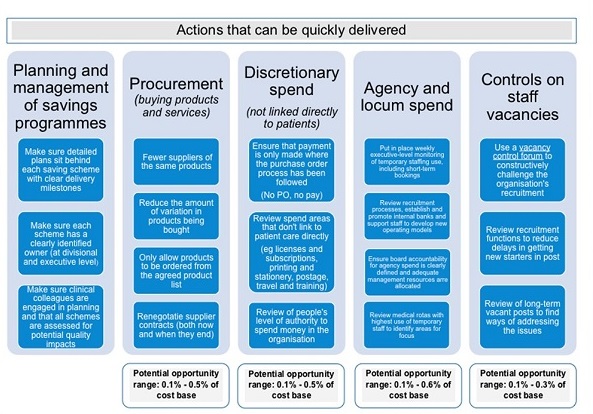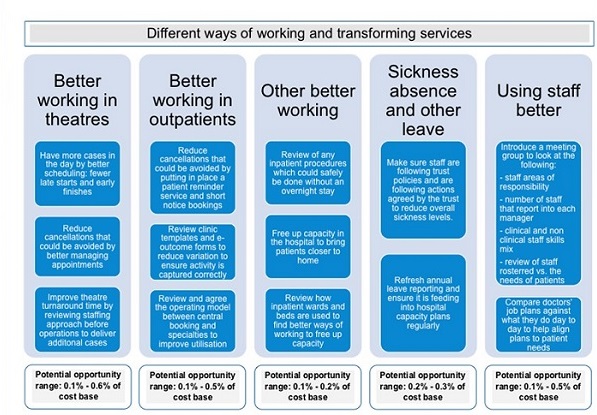Comment / The FIP route to savings
NHS Improvement has been active in recent months helping trusts identify more than £50m in potential savings through the Financial Improvement Programme (FIP). So where do we suggest you look when you think you have already tried everything and found nothing?
Now that the FIP has completed its first phase, we can reveal the top 10 places you should check. These high value interventions have emerged from the financial turnaround work carried out by the trusts on the programme working closely with external consultants.
Sixteen trusts were selected to be part of the FIP programme, designed to support trusts to deliver in-year savings and improvement to their finances and to meet their control totals. The first phase concluded in late summer. It included a rapid review of the trusts’ ability to find and deliver better ways of working and cost savings.
Improvement teams have worked closely alongside trust staff to help change things in practical ways on a day-to-day basis. The good news is that they found a wide range of areas to help deliver savings. They have also found better ways for trusts to find and report savings. Together this makes a strong foundation to build on in the future.
Many of the opportunities identified dovetail with the recommendations from the Lord Carter report on unwarranted variation in operational productivity in acute trusts, which recommended a range of productivity improvements and efficiencies, including in workforce, medicines, procurement, diagnostics, estates and facilities and back office costs.
The largest areas of savings found so far within the FIP involve the trusts finding better ways to use existing facilities. For example, theatres can be used more productively if trusts find ways of communicating more effectively with patients to reduce cancellation levels and ‘did not attend’ rates. There were also significant opportunities for procurement savings, including using a smaller variety of types of the same product, seeking volume or other price discounts and making sure everyone who buys products uses the standard product list.
Our ‘top ten’ opportunities by value broadly split into two areas: actions that can be quickly delivered and longer term ‘different ways of working and service transformation’. Many of these seem obvious but that doesn’t mean they are being addressed everywhere in the NHS – you might want to make a start by checking whether these are being done in your own trust.Top 10 actions to deliver savings


We asked external improvement teams to coach trust staff and ensure they were left with useful tools once the FIP ended. Tools have included trackers to keep an eye on vacancy and headcount levels, as well as templates to help forecast cash balances and likely requirements more accurately. Structures have also been put in place to monitor cash flow and vacancy control. Group workshops and one-on-one training sessions have helped make sure trust staff feel confident carrying on what they've learnt.
Further success in finding savings will rely on improvement teams and trust teams passing on new and better ways of working, as well as continuing to find areas to improve and make savings. Trust leaders will have to demonstrate they have an improvement mind-set by ensuring that financial and service improvement go hand-in-hand as part of everyday business.
Four or five months after FIP launched, the majority of trusts are now in the second, delivery phase. NHS Improvement will share the lessons learnt and good practice emerging from this new phase across the NHS, through events and sector forums. We are confident that the FIP can help protect patient care while delivering savings, so both patients and taxpayers benefit.Related content
The Institute’s annual costing conference provides the NHS with the latest developments and guidance in NHS costing.
The value masterclass shares examples of organisations and systems that have pursued a value-driven approach and the results they have achieved.